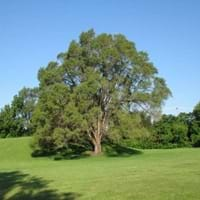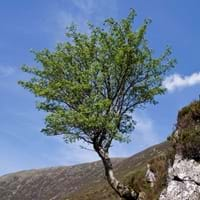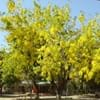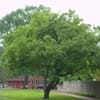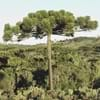Life Span
Perennial
Perennial
Origin
Asia
Asia, Europe, Northern Africa
Types
Not Available
Sorbus aucuparia fenenkiana, Sorbus aucuparia glabrata, Sorbus aucuparia praemorsa
Number of Varieties
Not Available
Habitat
Woodland Garden Canopy
Temperate Regions
USDA Hardiness Zone
2-9
3-7
Sunset Zone
A1, A2, A3, 1a, 1b, 2a, 2b, 3a, 3b, 4, 5, 6, 7, 8, 9, 10, 11, 14, 15, 16, 17, 18, 19, 20, 21
A1, A2, A3, 1a, 1b, 2a, 2b, 3a, 3b, 4, 5, 6, 7, 8, 9, 10, 14, 15, 16, 17
Habit
Upright/Erect
Oval or Rounded
Minimum Height
Not Available
Minimum Width
Not Available
Flower Color
Not Available
White
Flower Color Modifier
Bicolor
Bicolor
Fruit Color
Green, Tan
Orange, Yellow
Leaf Color in Spring
Dark Green
Green
Leaf Color in Summer
Dark Green
Green
Leaf Color in Fall
Dark Green
Dark Green
Leaf Color in Winter
Not Available
Dark Green
Leaf Shape
Elliptic
Pinnate
Plant Season
Summer
Spring, Fall
Sunlight
Full Sun
Full Sun, Partial Sun
Growth Rate
Very Fast
Medium
Type of Soil
Clay, Loam, Sand
Clay, Loam, Sand
The pH of Soil
Acidic, Neutral, Alkaline
Acidic, Neutral
Soil Drainage
Average
Average
Bloom Time
Spring
Late Spring
Tolerances
Pollution, Drought
Not Available
Where to Plant?
Ground
Ground
How to Plant?
Seedlings
Budding, Grafting, Stem Cutting
Plant Maintenance
Medium
Medium
Watering Requirements
Do Not over Water, Needs watering once a week
Do Not over Water, Water in the early morning hours
In Summer
Lots of watering
Lots of watering
In Spring
Moderate
Moderate
In Winter
Average Water
Average Water
Soil pH
Acidic, Neutral, Alkaline
Acidic, Neutral
Soil Type
Clay, Loam, Sand
Clay, Loam, Sand
Soil Drainage Capacity
Average
Average
Sun Exposure
Full Sun
Full Sun, Partial Sun
Pruning
Remove diseased branches by the tool's blades dipped into the alcohol solution
Remove dead or diseased plant parts, Trim each shoot back to the first set of leaves
Fertilizers
20-5-10 fertilizer
All-Purpose Liquid Fertilizer, Doesn't require fertilization when grown in rich soil
Pests and Diseases
Aphids, Leaf spot, Powdery mildew
Aphids, blister mites, Canker, fireblight, sawflies, Silver leaf
Plant Tolerance
Drought
Not Available
Flowers
Insignificant
Yes
Flower Petal Number
Not Available
Single
Foliage Texture
Medium
Fine
Foliage Sheen
Matte
Matte
Invasive
Sometimes
Sometimes
Attracts
Insects, Not Available
Birds
Allergy
Mild Allergen
Anxiety, Depression, High blood cholestrol, High blood pressure, Pain, Stress
Aesthetic Uses
Bonsai
along a porch, deck or patio, Showy Purposes
Beauty Benefits
Not Available
Not Available
Environmental Uses
Air purification
Air purification, Food for birds, Shadow Tree
Medicinal Uses
Antibilious, Antidote, Demulcent, Diuretic, Febrifuge, Poultice
Diarrhea, Inflammation, Laxative, Urinary tract problems, Vitamin C
Part of Plant Used
Fruits, Inner Bark, Leaves
Bark, Fruits, Wood
Other Uses
Inner bark can be dried and made into noodles, Sauces, Sometimes used for making wine, Used as a potherb, Wood used for boat making
Used for its medicinal properties, Used for woodware
Used As Indoor Plant
No
No
Used As Outdoor Plant
Yes
Yes
Garden Design
Shade Trees
Feature Plant, Mixed Border, Topiary / Bonsai / Espalier
Botanical Name
ULMUS pumila
Sorbus aucuparia
Common Name
Siberian Elm
Rowan, Mountain ash
In Hindi
Siberian Elm
रोवाण पौधा
In German
Siberian Elm
Rowan Tree
In French
Siberian Elm
Rowan Tree
In Spanish
Siberiano Elm
Rowan Tree
In Greek
Σιβηρίας Elm
Rowan Tree
In Portuguese
Siberian Elm
Árvore de Rowan
In Polish
Siberian Elm
Rowan Tree
In Latin
Siberian Elm
Rowan ligno
Phylum
Magnoliophyta
Magnoliophyta
Class
Magnoliopsida
Magnoliopsida
Clade
Angiosperms, Eudicots, Rosids
Angiosperms, Eudicots, Rosids
Tribe
Not Available
Not Available
Subfamily
Not Available
Not Available
Number of Species
Not Available
Not Available
Season and Care of Siberian Elm and Rowan Tree
Season and care of Siberian Elm and Rowan Tree is important to know. While considering everything about Siberian Elm and Rowan Tree Care, growing season is an essential factor. Siberian Elm season is Summer and Rowan Tree season is Summer. The type of soil for Siberian Elm is Clay, Loam, Sand and for Rowan Tree is Clay, Loam, Sand while the PH of soil for Siberian Elm is Acidic, Neutral, Alkaline and for Rowan Tree is Acidic, Neutral.
Siberian Elm and Rowan Tree Physical Information
Siberian Elm and Rowan Tree physical information is very important for comparison. Siberian Elm height is Not Available and width Not Available whereas Rowan Tree height is 1,000.00 cm and width 800.00 cm. The color specification of Siberian Elm and Rowan Tree are as follows:
Siberian Elm flower color: Not Available
Siberian Elm leaf color: Dark Green
Rowan Tree flower color: White
- Rowan Tree leaf color: Green
Care of Siberian Elm and Rowan Tree
Care of Siberian Elm and Rowan Tree include pruning, fertilizers, watering etc. Siberian Elm pruning is done Remove diseased branches by the tool's blades dipped into the alcohol solution and Rowan Tree pruning is done Remove dead or diseased plant parts and Trim each shoot back to the first set of leaves. In summer Siberian Elm needs Lots of watering and in winter, it needs Average Water. Whereas, in summer Rowan Tree needs Lots of watering and in winter, it needs Average Water.
